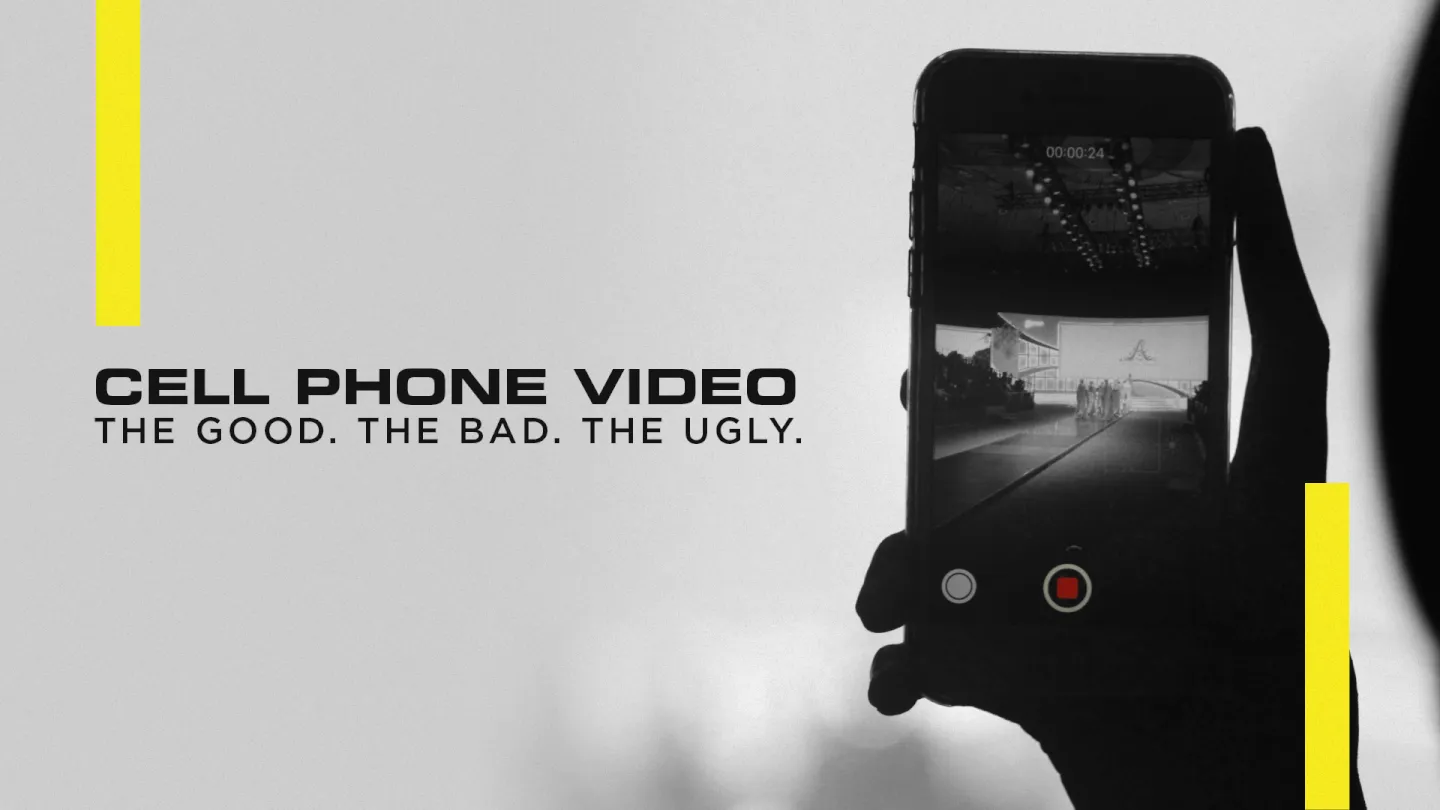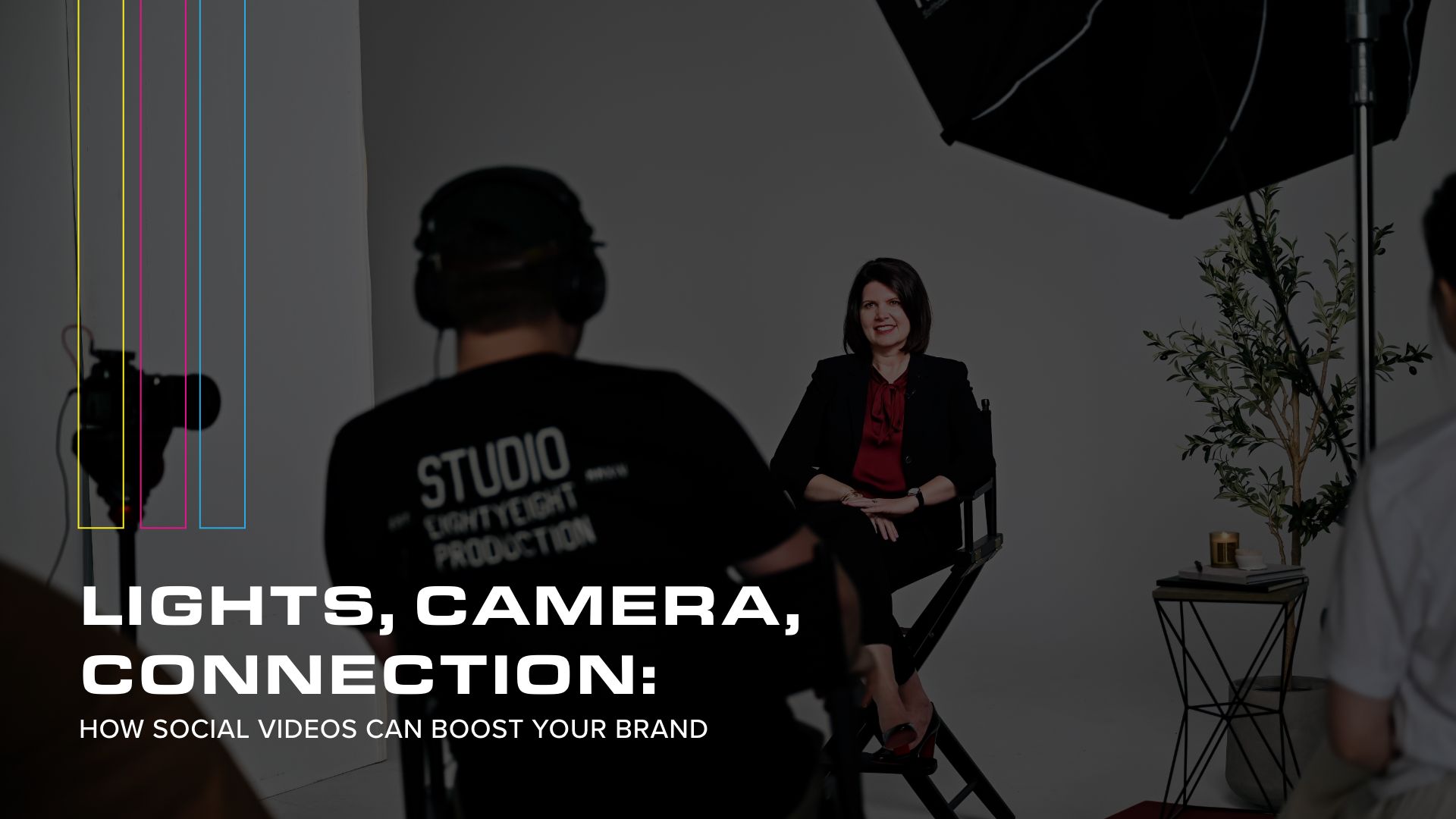Cell Phone Video: The Good, The Bad, The Ugly
With technology constantly evolving, it can be really intimidating to know exactly what gear to purchase when planning out your next video post. I have a strong belief that the best camera is the one you already own. For most people, this is most likely the device you are using right now to read this article. That’s right, it’s your smartphone! I am here not only to tell you, but also to show you, how that small camera in your pocket is more than capable of making high-quality video content for all of your social media platforms. Let's dive into the good, the bad, and the ugly of smartphone videography.
The Good
Before you even pick up your phone to start snapping some snazzy footage, you need to focus on what the heck you are trying to say. For me, this process is focusing on the message I want to deliver, then identifying who I want it to be delivered to (and in what format). Creating the right video for the right audience is critical. Want proof? My G-ma absolutely adores handcrafting custom birthday cards each year for me and my siblings. The only problem is, they never make it to the right address! The tragedy here is the amount of time she put into making such a thoughtful card, and the correct audience (me) will never get to see it.
Don’t let your videos land flat like G-ma’s birthday cards! You, as the creator, are responsible for making sure that your content reaches the right audience. Are you creating a tutorial for your patients that will be sent out in an email? If so, it's best to shoot these videos horizontally. Are you creating a series of videos for your Instagram feed? I would recommend shooting these videos vertically. Think about each video’s final destination and plan accordingly.
Once you have an idea of where this video is going to live, you need to focus on exactly what you want to say. STORY IS EVERYTHING! For nearly four decades, the original Star Wars trilogy has held strong because of its foundation in story. You can have an unlimited budget, the best cameras, and a professional lighting setup, but if the story is lacking, none of that matters. Expensive garbage is still garbage. If you are a dentist speaking to your patients, it’s important that you share with them a little of your backstory. This will allow your patients to connect with you as an individual, and will reassure them that they are in good hands. Heck yes!
Okay, we now have a clear idea of what we want to say, how we want to say it, and who we want to say it to. It might be tempting to jump right in here and start filming, but slow down Spielberg! If you spend all this time telling a great story, you want it to be seen. It’s all about getting that click! Here are three easy steps to make your videos stand out like Big Bird at a Slipknot concert.
1. Lighting
Lighting is the key difference between the amateur and the professional. First tip: If you are sitting down talking right into the camera, you rarely want to be facing directly towards your light source. This will make your face look flat and unappealing. Instead, have your light pointing at an angle towards one side of your face. This will add depth to your image (and make you look much more attractive). If you are shooting outdoors, take advantage of Golden Hour. Golden Hour is the first hour of light right after the sun rises in the morning, or the last hour of light before the sun sets in the evening. Shooting during Golden Hour is the easiest way to add a little movie magic to your video.
2. Momentum
We have all heard it before; time is the most valuable resource. In today’s fast paced and ever-changing environment, time is more valuable than ever. Your audience’s attention is being fought-for 24/7. We no longer have the luxury of letting your story breathe. This is especially true for social media content. If there is so much as a five-second lull in your messaging, you will most likely lose your audience. Work on the delivery and the cadence of your voice when speaking, and make sure that it has momentum from start to finish. Shorter is always better when it comes to video length. It’s better to leave people wanting more than wishing they had seen less.
3. Have Fun
A lot of you will read this little header and greet it with a subtle rolling of the eyes. Please hear me out. We have all seen it before: a dentist or doctor will go on and on in a video about some procedure, speaking in technical terms with a monotone temper in their voice. Sure, the information may be important, but if you don’t sound excited talking about it, how can you expect your audience to be excited to listen to it? When making a video on a topic you are passionate about, be the most energetic person in the room! Imagine William Wallice in Braveheart (1995) giving his battle speech with the same enthusiasm as if he was reading Julia Child’s recipe for french onion soup. You need to show your passion, your humanity, and that you are having fun.
The Bad
I have never been a strong believer in “rules” when it comes to videography. Early on, I adopted a “rules were meant to be broken” sort of mentality when approaching my craft. I strongly believe that great artists are made by looking outside the box and approaching their work in a way that no one else would. This being said, there are a few major no-no’s that I try to avoid when filming.
1. All Tell, No Show
Videos are not for telling, they are for showing. If you are sitting in front of a camera talking about proper dental hygiene, but not showing techniques for flossing or brushing, you are failing. Video is a visual medium! You must have visual aids that support your narrative. Take a look at any of our client videos and you will see footage of patients smiling and laughing when the docs are talking about positive patient experiences. These visuals will provide your audience with the proof they need to buy into what you are telling them. Don’t feel like you have to take a bunch of fancy footage to make this work. Pictures are a great substitute, and can easily be thrown into a video edit to support the talking points of your speech.
2. Bad Audio
Audio is the first thing overlooked when people start shooting videos. In my opinion, audio quality is more important than video quality. Ultimately, audio allows your audience to hear the story. I think of it like this: if you watch a movie and cover your eyes, there is a good chance you will still be able to follow along with the plot. However, if you plug your ears and watch that same movie, it’s going to be a lot harder to know what exactly is going on. You have to make sure that your audience can clearly understand what you are saying. This can be as simple as turning-off the air conditioning in the office to make sure it’s quieter on video, or putting a towel at the base gap of your door to keep any outside noise from entering the room. Any little thing you can do to help control the audio in the room you are filming helps more than you know.
3. Never Filming
This is so obvious it should go without saying. In all honesty, it’s also the most difficult hurdle to get over. There will always be a million reasons not to shoot a quick video or to keep posting photos on your Instagram feed instead of branching out. I cannot stress enough how important it is, especially in our current climate, to keep in touch with your patients and community visually. If you leave your clients in the dark for too long on how your brand, practice, or agency is doing, they will expect the worst. Or worse, they’ll forget about you entirely. During this time of uncertainty, it is important that you keep your patients in the loop.
The Ugly
When all of those little annoyances are added together, the ugly can cause a viewer to stop the video. It’s the small things, like a stain on a shirt. Sure, the shirt still functions as a covering, but it’s just... well… ugly. Here are a quick few uglies to avoid on your next video post.
1. Midday Light
Shooting a video outside in midday light will cause “raccoon eyes” to form on your subject due to the sun shining directly above, casting ugly shadows from their forehead. Shooting in midday light will also be challenging for your smartphone camera because the sensor will have to overcompensate for the bright light and create an ugly flat image. Combine a flat image with nasty shadows and you end up with a less-than-appealing final result.
2. Clutter
When you are creating your shot, whether it be an interview or an “establishing shot” of the outside of your dental practice, you always want to have control of what the viewer is looking at in the frame. If your composition is full of distractions or clutter near your subject, it will distract the viewer and you will lose their attention. The best and most effective solution for this is creating some separation between your subject and anything behind them in the frame. Leave some empty room around them to encourage your audience to focus on the subject. In the video/photo/illustration world, we call this “negative space”. It’s the space surrounding the subject where there is no action. Next time you are watching a film, pay attention to how the videographer uses negative space to guide your eyes from shot to shot.
3. Camera Anxiety
Camera anxiety is that feeling you get when you see the dark void of a camera lens pointed in your direction. It’s one of those things that goes away with practice and time. If you feel uncomfortable, it is very likely that your audience will be able to tell. My solution for this is simple: Practice. Pull out your phone and record yourself talking about something you know well. Keep doing this until you forget that the camera is there and it feels like you are talking to another person in the room. This isn’t one of those rules that you can challenge like I mentioned above. Go. Practice. Now.
If you need an example of what not to do (or just want a quick laugh) please reference the video below:
Video is more important now than ever, and if you can get ahead of the game and learn to emphasize the goods, fight off the bads, and makeover the uglies, you will have a much stronger connection with your audience in the future. Use that high-quality video camera in your pocket and focus on the story. That’s the best place to start. Want to make some high-quality, professionally produced videos for your practice? We’d love to help with that too. Hit us up for a conversation.




